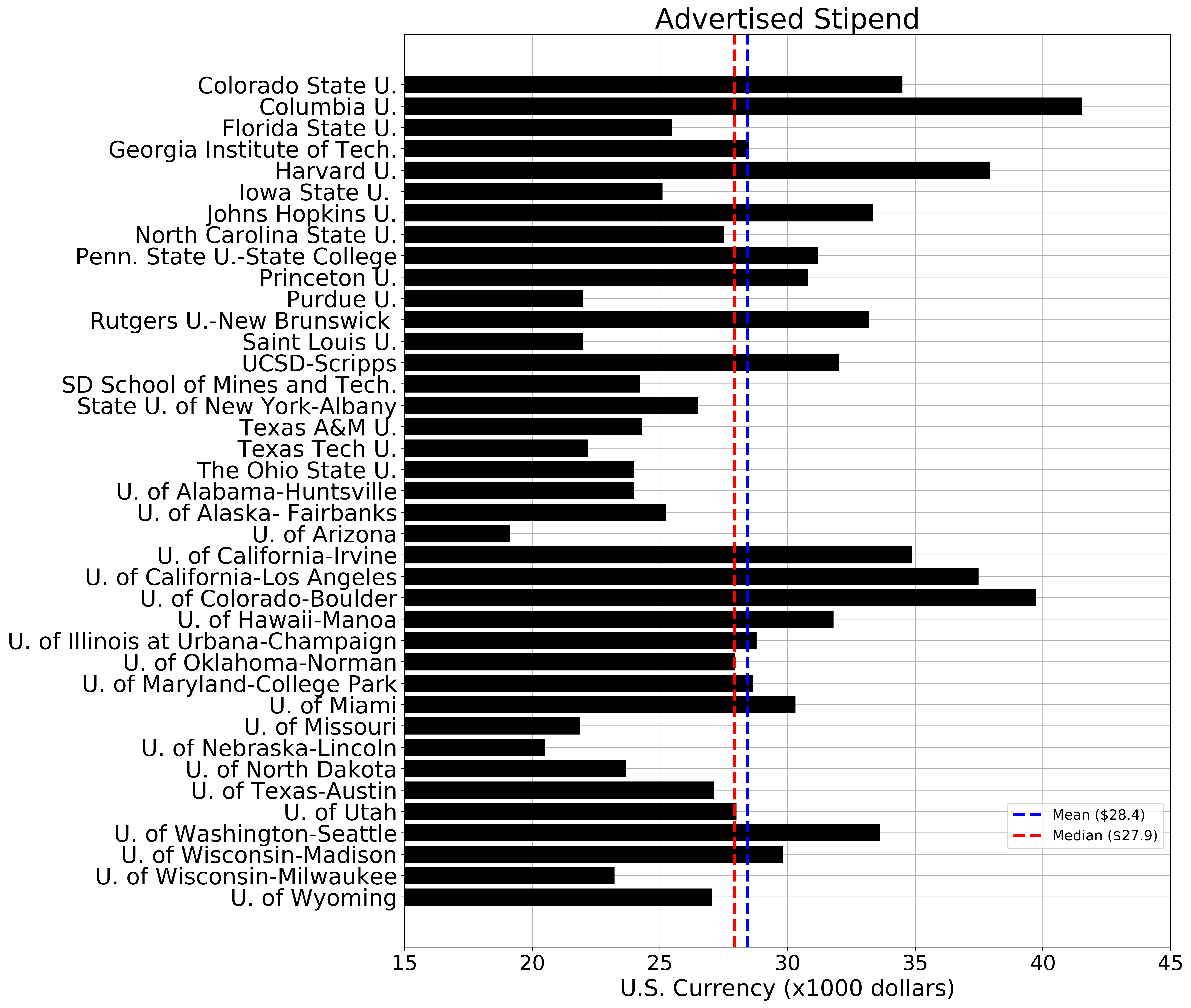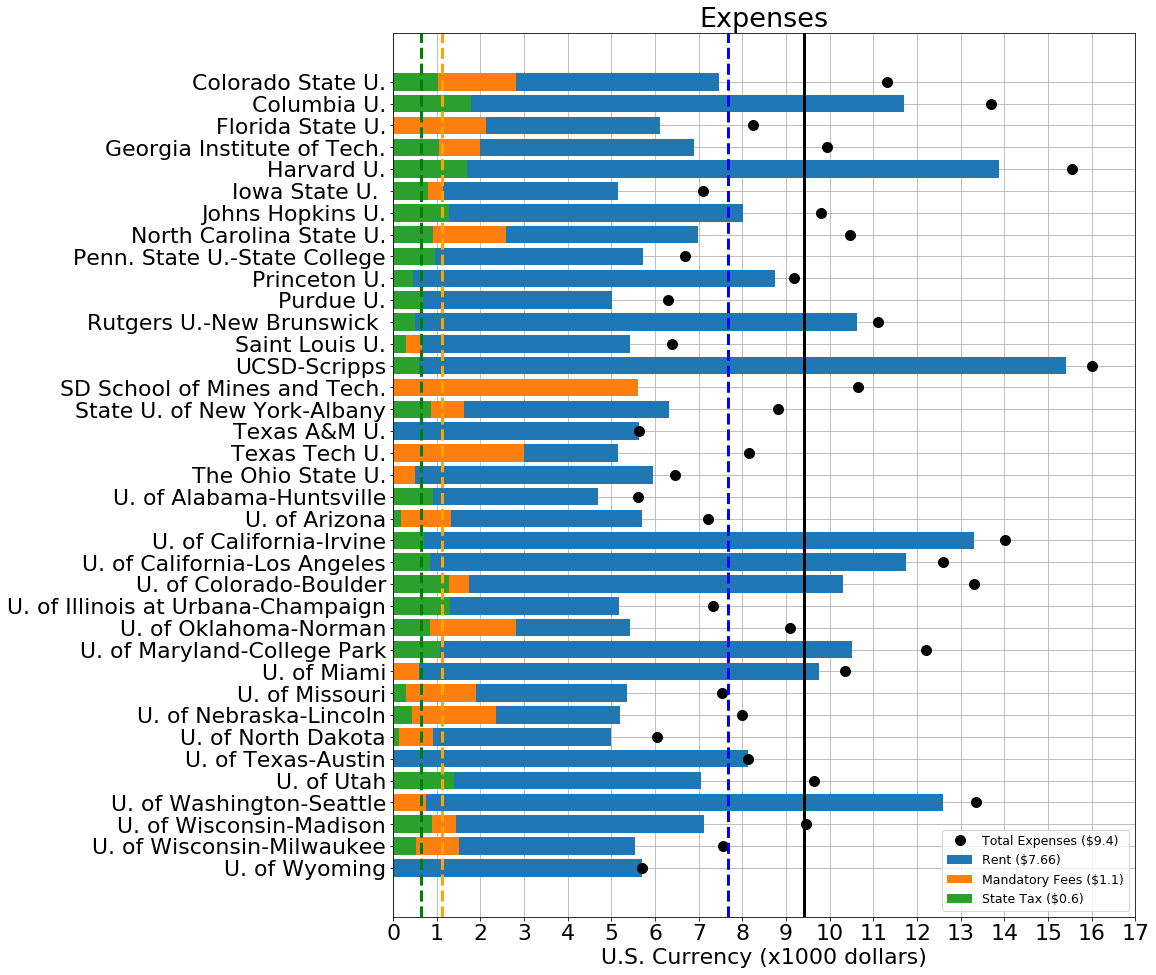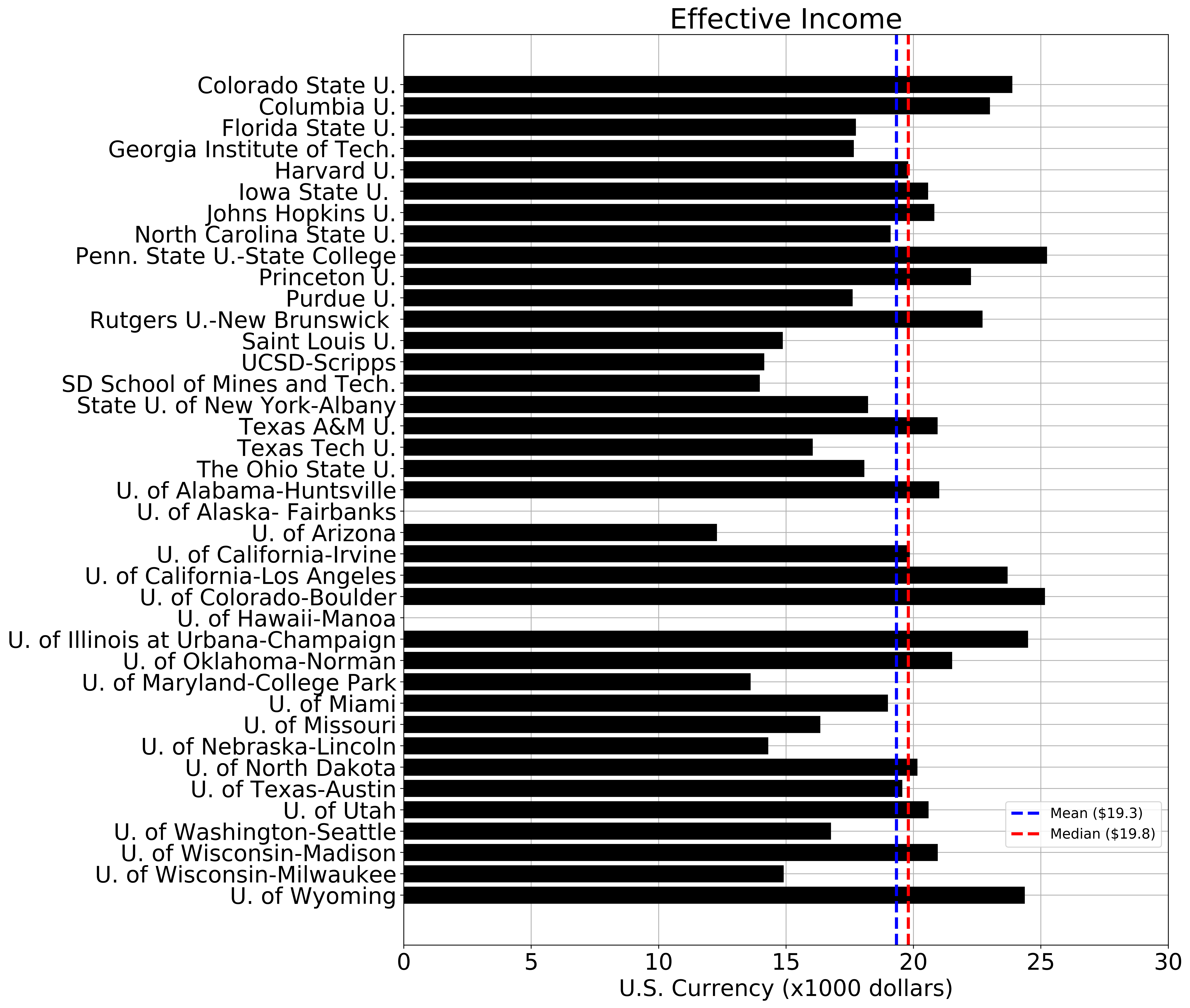

Dylan R. Card, Heather S. Sussman, and Ajay Raghavendra
Publication Available Here
Abstract: Graduate school provides an opportunity for students to enhance their knowledge and skillsets,
and develop the qualifications to seek high-skilled employment. However, many graduate
students are plagued with personal and financial stressors that can decrease research productivity
and professional growth. With ballooning student loan debt and economic inflation, stakeholders
should review the financial well-being of our current and future graduate students with greater
frequency to ensure the continued fast-paced advancement of science. This study investigated the
annual stipend, university fees, housing costs, cost of living, and the state income tax rate of 39
atmospheric science graduate programs in the United States to determine the effective income
for first-year graduate students in the 2020–2021 academic year. Results showed a large spread
in advertised stipend amounts ranging between $19,139–$41,520 (USD). After taking into
account annual university fees, housing costs, state income tax, and normalizing by the cost of
living, effective income had a decreased spread ranging between $7,388–$26,317. Prospective
graduate students should not focus on the advertised stipend when deciding between schools
since it does not always accurately represent the affordability of the graduate program. The
future of scientific research relies on the next generation of scientists. Therefore, graduate
programs across the country should focus on providing fair financial compensation in order to
attract students with exceptional research skills who otherwise may leave academia to pursue
higher-paying jobs after college. Card, D. R., H. S. Sussman, and A. Raghavendra, 2020: The Financial Dilemma of Students Pursuing an Atmospheric Science Graduate Degree in the United States.
Bull. Amer. Meteor. Soc., 101, E1524–E1536, https://doi.org/10.1175/BAMS-D-19-0122.1


